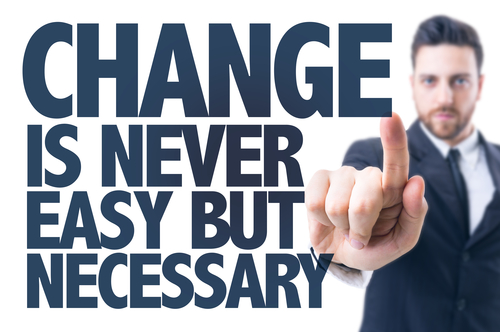What is an Organizational Change Management Plan?
An Organizational Change Management Plan is a framework, structure, and a process to adjust and adapt to any massive shifts to the current organizational state. Change Management, in essence, is a smooth transition to a new normal after a significant business or technology transformation.
As Jimmy Dean eloquently states: “I cannot change the direction of the wind, but I can adjust my sails to always reach my destination.” There is nothing companies can do to alter the vagaries of the economic and business climate, as well as the technology advances that make enterprise transformations a strategic imperative.
Business change management plans address a critical ingredient – the human psyche – and how to ensure stakeholders are all on board with the proposed change and then in the aftermath deal with the consequences of the change.
Typically, a change management plan encompasses the following essential elements:
- Change Management Framework
- Change Management Team Structure, Roles, and Responsibilities
- Training and Adoption Plan
- Communications Plan
- Stakeholder Mapping and Expectations Management
: “I cannot alter the direction of the wind, but I can adjust my sails to always reach my destination.” There is nothing companies can change to the vagaries of the economic and business climate, as well as the technology advances that make enterprise transformations a strategic imperative.
How to draft an effective Organizational Change Management Plan?
- Document the Imperatives for Change: Transformation programs are an offshoot of moribund current state or a desire to leapfrog. Capturing the need for change – both internal factors and external factors – will help set the stage for why the Enterprise is embarking on a significant shift.
- Define the North Star: In addition to figuring out why there is a need for change, it is also important to determine what that change entails. An aspirational desired state will help rally various stakeholders to the cause.
- Detail the Transformation Agenda: In addition to a highfalutin vision, a more clear how to get from the point of departure to the point of arrival is an essential ingredient in allaying FUD (Fear, Uncertainty, and Doubt) among stakeholders.
- Map the Stakeholders: The first step is identifying influencers and impacted populations in the enterprise. Then one can create a heat map about the state of their mind, the level of influence and involvement, and strategies for mitigating specific concerns of each group.
- Identify the Scope, Size, and Impact of Change Management: The extent of the program and the stakeholder mapping will allow an initial guesstimate on the scope, size, impact, and intensity of the change management program. Most transformation programs fail, not because of faulty software, or incoherent processes, but because not enough time, energy and effort are spent on change management.
- Adopt a Change Management Framework: There are several frameworks one can choose to facilitate change management and follow a set of prescribed step, of course with adequate customization to particular organizational change dynamics. Prosci has developed ADKAR. Kotter’s eight steps to change process. Bridges Transition Model. Moreover, several others including a change management framework and plans by CIOPages.com.
- Constitute the Change Management Structure and Build the Team: A change management team, by definition, needs to be able to handle change. A multi-disciplinary team with a diverse set of experiences and expertise need to come together to form a cohesive team executing a coherent plan. In the end, it is the people who are the critical pieces of the change management puzzle.
- Create a Governance Structure: A lightweight governance that is high on making progress rather than on process should be the goal.
- Identify Components of Change Management: Each transformation program is different, and hence the elements of change management which need to orchestrated will vary as well. The standard components are as follows:
- Change Management Framework and Approach
- Stakeholder Mapping
- Transformation Rollout Plan
- Training and Adoption Plan
- Communications Plan
- Draft a Plan for Each Work Stream: Each work stream should work on creating a simple project plan, focusing on outcomes, not artifacts.
- Execute the Plan: Here is where the rubber meets the road. All change management programs cease to be effective at the first sign of resistance. Hence, a prudent policy should be followed by flawless execution.
- Anticipate and Deal with Impediments: In major transformations, things that can go wrong will go wrong. Moreover, there will be many unknown unknowns. Hence, the ability to anticipate, agility to deal with adversity, and ability to get things back on the track are highly prized skills.
- Monitor progress and Refine the Approach: Major transformations take time, and the change management takes time – beginning well during the actual execution of the transformation and long after it is completed. Hence, constant monitoring of progress and refinement of the approach, the process, the team, and the activities is an absolute must do.
- Measure the Results of Change Management: Have defined success metrics and evaluated the success of the program dispassionately.
- Document Lessons Learned: Change is not a one and done. A new transformation will be on the anvil soon, and consequently, another organizational change management program will be required. Hence, documenting the lessons learned from the trenches will help those who come after you.
Hope you learned a quick and straightforward way to define and draft an organizational change management plan. If you are embarking on specific change programs, please pick an organizational change management plan offered by CIOPages.com. The organizational change management plan deliverables are also available as a part of the enterprise transformation kits.
Supply Chain Transformation Change Management Plan
Marketing Transformation Change Management Plan
Human Resources Transformation Change Management Plan
Accounting and Finance Transformation Training Plan
Finance and Accounting Transformation Change Management Plan
